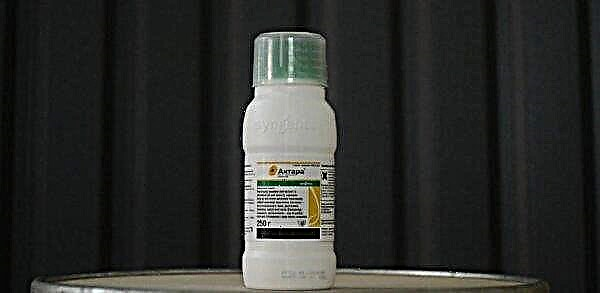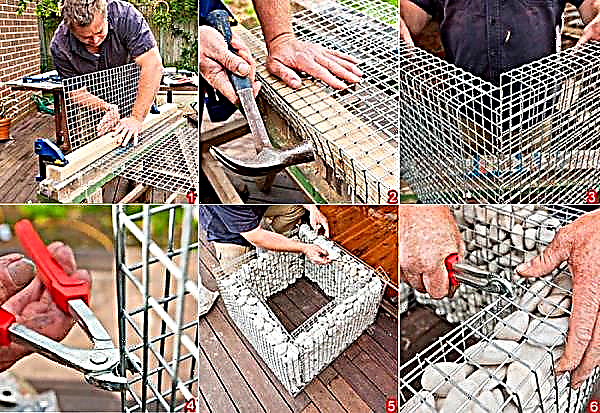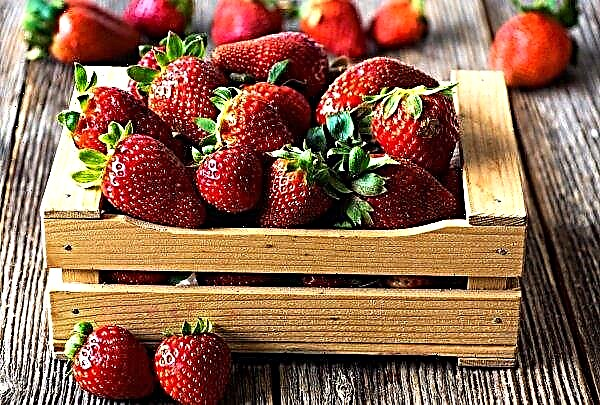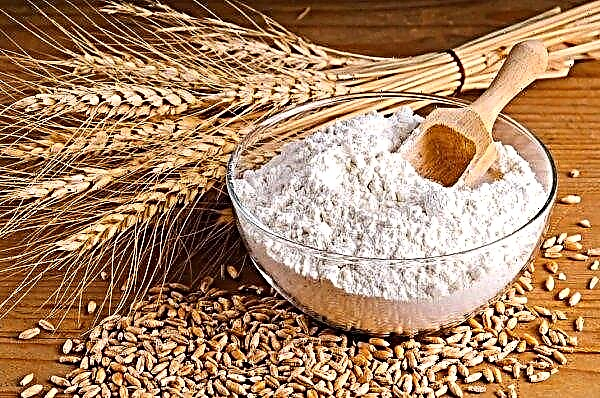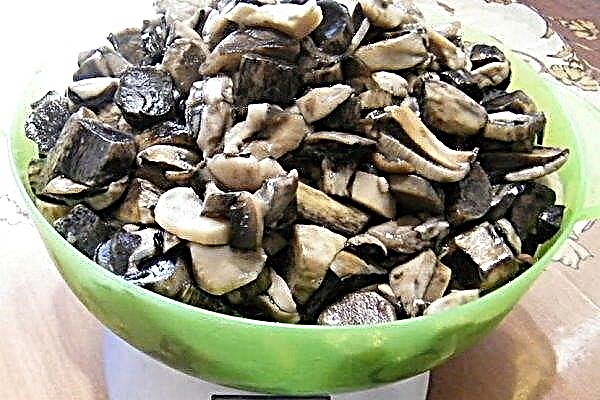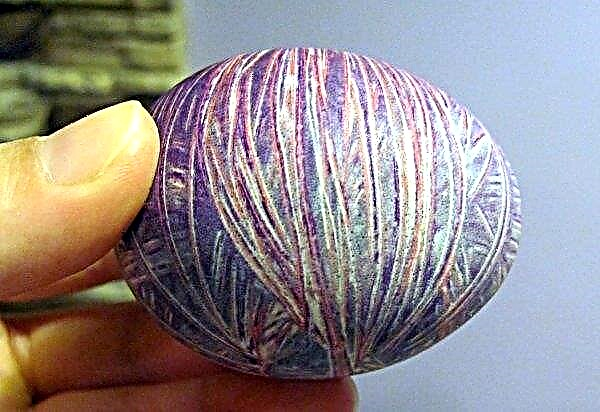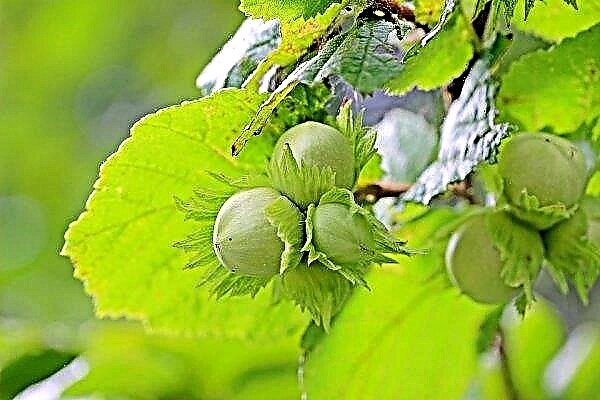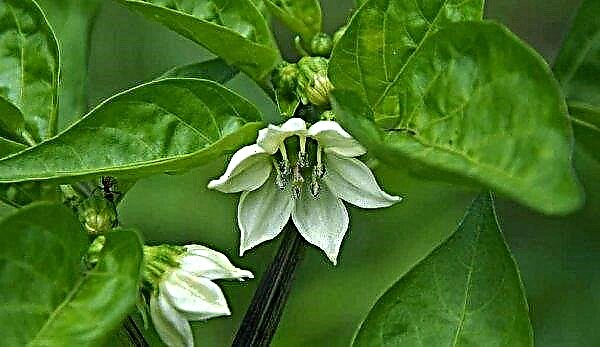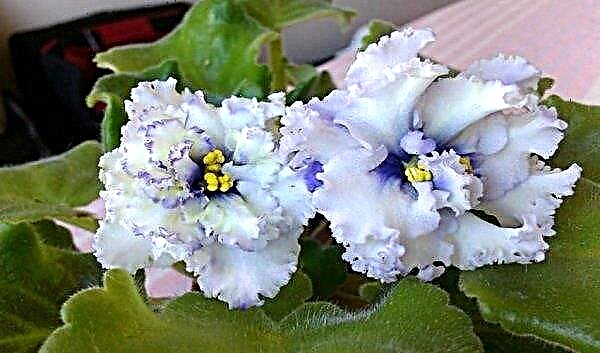Tomatoes are considered undemanding crops. However, to obtain the maximum yield, they need to be fed with fertilizers. Consider when and what is the best way to fertilize tomatoes, folk remedies and the basic rules for their application.
Do I need to fertilize tomatoes during flowering
Tomatoes have been grown in our country for hundreds of years. Over all this time, considerable experience has been accumulated in growing this crop. It is noted that correctly given top dressing increases fruit setting and tomato resistance to diseases characteristic of them. Therefore, to obtain a good harvest, it should be ensured that the plants lack the necessary substances and feed them for more ovary. The top dressing of tomatoes in a greenhouse is especially relevant if they are not planted in the same place for the first time, or for balcony tomatoes, whose root system is limited by a container.
The top dressing of tomatoes in a greenhouse is especially relevant if they are not planted in the same place for the first time, or for balcony tomatoes, whose root system is limited by a container.
Important! If you do not fertilize the tomatoes during flowering and as the fruits grow, then this will not only reduce productivity, but also worsen the taste of tomatoes - they will become sour.
The annual cultivation of garden crops (including tomatoes) depletes any soil, so you don’t have to wonder about whether to fertilize tomatoes during flowering, but start picking fertilizers.
Types of fertilizers
In fertilizing tomatoes use two types of fertilizers - mineral and organic. Among the population there are also various folk recipes and different feeding methods.
Mineral
During the growing season, tomatoes most consume three elements - nitrogen, phosphorus and potassium. Therefore, mineral fertilizers are generally divided into three main groups:
- Nitrogen. They are especially needed at the beginning of the growing season, when the plant grows green mass before flowering. These include urea and ammonium nitrate, which are bred from a proportion of 1 tbsp. spoon on a 10-liter bucket of water.
- Phosphoric. The most important during the formation of tomato roots and is often used in top dressing for seedlings. Their typical representative is superphosphate. It is poorly soluble, so at first 1 tbsp. a spoon is dissolved in 1 liter of boiling water and infused for 24 hours. Then the resulting solution is diluted in a 10-liter bucket of water.
- Potash. Promote the development of roots, improve the taste of tomatoes, increase the protective functions of plants. They can be used at all stages of growing tomatoes. For this culture, potassium sulfate is usually used, diluting 40 g of this fertilizer in 10 l of water for irrigation.
 Gardeners prefer to feed plants with complex fertilizers containing optimal proportions between the elements. For tomatoes, it is better to use such complexes:
Gardeners prefer to feed plants with complex fertilizers containing optimal proportions between the elements. For tomatoes, it is better to use such complexes:
- Diammophos. Contains all of the above elements and some trace elements. It is easily dissolved, and it is often added to the soil during digging from the norm of 30–40 g per 1 m² of land. For liquid top dressing 2 teaspoons of fertilizer per 10 l and use on 1 m².
- Ammophos. 50% consists of phosphorus and 10% of nitrogen. It can also be applied in dry and dissolved form.
- Nitroammofoska. Contains all the basic three elements in equal parts. It is introduced during digging (30–40 g per 1 m²) or for liquid top dressing under the root.
Important! The lack of trace elements for tomatoes is not so critical, since these plants are grown in our country one season. However, it negatively affects the immunity of tomatoes, in particular, the resistance of late blight.
Organic
These natural fertilizers will effectively feed the tomatoes and increase their productivity. They have a rich composition, improve the land and are environmentally friendly. They can be brought into the ground even during the autumn digging of the soil, or they can be bred with water and fed tomatoes. The most used organic fertilizers are:
The most used organic fertilizers are:
- Manure. It is a natural source of basic and auxiliary minerals. For feeding suitable rotted manure. It is diluted with water in a ratio of 1: 5 and insisted for 2 weeks. Then half diluted with water.
- Bird droppings. It is bred for top dressing in a large amount of water (10 g of dry guano per 10-liter bucket). When using concentrated solutions, you can "burn" the tomato.
- Peat. Nourishes, improves soil structure and regulates moisture. However, there are not very many important elements in it and usually it is combined with the introduction of other fertilizers.
- Compost. Many gardeners keep compost pits or boxes in their area where plant debris and food debris decompose and become fertilizer. Also suitable for mulching.
- Herbal infusion. 2/3 of the crushed weeds fill the tank and fill with water, cover with a film and insist on the sun for 2 weeks. Then the resulting infusion is diluted with water in a ratio of 1:10.
- Sapropel This fertilizer is taken from the bottom of freshwater reservoirs. It has a rich composition and bacteria that work like natural filters. It perfectly improves the earth and can be stored for 12 years. It happens of different brands depending on the acidity. It is brought into the earth as follows - 3-5 kg per 1 m².
- Humates. They are stimulants for plants, improve the structure of the soil, and are sodium or potassium salts of humic acids. The basis for their production is peat, brown coal or sapropel.
 In addition to the above-mentioned well-known fertilizers, the following top-dressing recipes are popular among gardeners:
In addition to the above-mentioned well-known fertilizers, the following top-dressing recipes are popular among gardeners:
- Yeast. They help improve the root system and strengthen the plant. For them, 10 g of dry yeast is diluted in 10 l of water and thrown into a mixture of 2-3 tbsp. tablespoons of sugar. Insist the mixture under sunlight for a couple of hours, and then dilute 1 liter of solution in a bucket of water and water the bushes at the root. The simultaneous introduction of ash into the soil is recommended.
- Ashes. Formed by the burning of branches, weeds, firewood. It contains a lot of potassium and phosphorus, as well as a whole complex of necessary trace elements. Feeding with ash is done like this - 2 glasses of ash are diluted in 10 liters of water and allowed to infuse for three days. Such top dressing is good for calcium deficiency.
- Iodine. During the tying period, 3 drops of iodine are diluted in 10 liters of water and 1 liter is poured under each plant. Feeding with such a microelement as iodine increases the plant's immunity and inhibits the pathogenic microflora, helps from late blight.
- Urea Weak plants lagging behind in growth are advised to do foliar top dressing. For it, they bred in 10 liters of water 1 tbsp. urea spoon and spray the bushes. After a decade, such spraying is repeated.
- Boric acid. With this substance, foliar spraying is done, preventing the ovary from falling under unfavorable conditions for flowering. Boron is very useful for fruit setting. To prepare it, 1 g of boric acid is diluted in 1 l of warm water. And this solution reduces the likelihood of late blight disease - 1 teaspoon is diluted in 10 liters of warm water.
Did you know? The type of soil in the garden also affects the choice of fertilizer. Acidic soils respond well to feeding with ash. Clay - love the introduction of manure, saltpeter and sawdust, and sand - just love any organics and mulching. With poor soil friability, peat, sand or compost are added.
The use of folk remedies
Some folk recipes use pharmacy drugs for foliar nutrition of tomatoes, but will tomatoes such as iodine or boron harm tomatoes? They can be used, but it is important to adhere to the recommended doses so as not to “burn” the plant. Among folk recipes, you can find such dosages:
Among folk recipes, you can find such dosages:
- Foliar from iodine and milk. Dissolve 5 drops of iodine and a glass of milk in 1 liter of warm water. They should not be sprayed too abundantly.
- Foliar from iodine and serum. Mix 8 liters of water, 2 liters of whey, 3 cups of sugar and 20 drops of iodine.
- Foliar from potassium permanganate. Make a weak solution of potassium permanganate, having a light pink tone.
- Foliar from ammonia. In 10 l of water dilute 2 tbsp. tablespoons of ammonia and 1 handful of laundry soap purchased at the pharmacy.
- Root with ammonia. Dissolve 100 ml of ammonia in 10 l and add a little under the tomatoes after watering.
But folk recipes for a good harvest, using mixtures with organic:
- Root with chicken droppings 1. In a 10-liter bucket of water, dilute 0.5 l of chicken droppings, 2 tbsp. tablespoons of superphosphate and 1 tbsp. a spoonful of potassium sulfate. It should not be forgotten that superphosphate is poorly soluble and diluted one day before use.
- Root with chicken droppings 2. Stir in a bucket until 0.5 l of chicken droppings, 5 g of boric acid and 1 tbsp. a spoonful of potassium sulfate.
- Integrated root. The following is laid in a 200-liter barrel - nettle (1/3 volume), 1 bucket of mullein, 2 shovels of ash, 2 kg of baking yeast, 3 l of whey. After 14 days receive liquid fertilizer, 1 liter of which is diluted in a bucket of water.

Fertilization dates
After planting tomato seedlings, you need to feed them to get more fruits. These top dressings can be broken down into 3 stages by time:
- 2 weeks after transplanting seedlings in open ground or in a greenhouse. Helps the plant take root faster and get used to new conditions. Liquid root dressings from organics or mixed with mineral fertilizers are recommended.
- During budding or flowering. Promote better fruit setting. During this period, the proportion of nitrogen fertilizers is sharply reduced, phosphorus and potassium come first. During this period, superphosphate or mixtures with it, feeding from yeast, foliar spraying with boric acid or iodine will be useful.
- In the period of fruit set and growth. Improves the taste of tomatoes and increases their size. Feeding from organic or complex fertilizers with the addition of ash, iodine, manganese is well suited.
Did you know? In Japan, in the old days the land was fertilized with human feces, since there was a shortage of cattle and manure. The stools of rich people were considered of the highest quality, since their nutrition was more diverse and sufficient.
Technology and basic rules for feeding tomatoes
The introduction of timely top dressing during the flowering and fruiting period is an important point for obtaining a high yield. They allow the plant to grow stronger and resist various diseases. When feeding, you must adhere to the following rules:
When feeding, you must adhere to the following rules:
- fertilizer should be in the evening;
- foliar top dressing should be carried out in sunny weather;
- the maximum number of top dressings is 6 times for the entire growing season, that is, 1 time in 14-21 days. The minimum number of dressings - 3 times;
- fertilizers are first applied 21 days after planting seedlings;
- the second time contribute to the flowering period;
- the third feeding is carried out during the appearance of the fruit.
During fruiting
A very important point for obtaining a good harvest is top dressing during the ripening period. At the initial stage of fruit setting, the following fertilizer scheme is recommended - 4 cups of ash are steamed with 5 liters of boiled water. The resulting mixture was stirred in 10 l of water and 10 g of boric acid, as well as a small bottle of iodine, were added to the mixture. Then each liter of the resulting mixture is stirred in a bucket of water and irrigated.
This mixture contributes to a more rapid formation of fruits, increase their quality characteristics, and also protects against late blight. You can prepare such a mixture for feeding - 1 liter of rotted mullein, 2 tbsp. tablespoons of superphosphate, 1/3 teaspoon of copper sulfate.
Video: Fertilizing tomatoes during fruiting
During flowering
Tomatoes in the flowering phase are in great need of fertilizers containing potassium and phosphorus, but nitrogen fertilizers should be excluded. The intake of the necessary substances contributes to the formation of a good ovary on the bush.
Top dressing is carried out depending on the degree of flowering of the tomato bush. At the beginning of flowering, the following dressing is recommended - for 1 liter of mullein infusion, take 1.5 tbsp. tablespoons of superphosphate and knead in a bucket of water.
At the time of the active appearance of color, tomatoes use compost. For its preparation, crushed weeds are placed in a barrel, which are then poured with water in a ratio of 1: 5. Ash, mullein or bird droppings are also added to the barrel. Such a mixture is allowed to stand for 7 days. Then it is watered at the rate of 1 liter per 1 bush of tomato.
Video: Topping tomatoes during flowering
At the end of flowering, before the appearance of the ovary, it is necessary to carry out foliar top dressing. For this purpose, use the following composition:
- 60 g of superphosphate;
- 40 g of potassium chloride;
- 15 g of ammonium nitrate.
Features of watering tomatoes
Tomatoes do not tolerate severe drought or excessive watering. Recommended indicators of soil moisture 80% and air 50-60%. After planting seedlings in the soil, each plant should be watered with 4-5 liters of water. The next watering is carried out after 3-4 days.
How many times a week you need to water the tomatoes depends on the growing season. Before flowering, you need to water 2 times a week at the rate of 1-2 liters for each plant. How often to water depends on weather conditions. When it rains, watering is suspended. During flowering, lack of fluid can cause color to fade. Therefore, during this period it is necessary to pour more water (4-5 l), but less often (once every 7 days). At the stage of formation and growth of fruits, it is necessary to reduce watering - about 1-2 liters, but 2 times a week, and in dry weather to water every 2-3 days. Tomatoes are watered with cold and settled water. Watering itself should be carried out under the root in the morning or in the evening. For tomatoes of small height, it is enough to irrigate 3 liters of water per 1 plant, and for a tall variety of tomatoes, the need for liquid almost doubles. If the bush contains an abundance of fruits, then watering reaches 10 liters.
For tomatoes of small height, it is enough to irrigate 3 liters of water per 1 plant, and for a tall variety of tomatoes, the need for liquid almost doubles. If the bush contains an abundance of fruits, then watering reaches 10 liters.
Convenient for watering tomatoes consider drip irrigation system.
Useful Tips
Gardening specialists during the feeding of tomatoes to obtain a high yield give the following tips:
- To harvest a high crop of tomatoes, it is recommended to prepare the soil. When digging the soil in the fall, it is recommended to introduce manure, which will rehash during the winter time and the soil will be well fertilized in the spring.
- When planting, do not add manure to the wells, since the plant will grow, but the fruiting itself will not be very plentiful.
- Fertilize with mullein preferably 3 times for the entire growing season ;.
- During the growth period, avoid thickening, since this vegetable crop likes good illumination.
- Observe crop rotation.
- No need to change the fertilizer used. You should choose a specific complex of mineral fertilizers and alternate them with organic top dressing.
- Watch for tomatoes and watch for signs of lack of elements. For example, yellowing of the leaves indicates a lack of phosphorus, and then superphosphate should be used. Chlorotic leaf spotting is a sign of micronutrient deficiency and requires foliar treatments.
- Topping tomatoes from the 2nd half of July should be stopped.
- Adhering to the principle - it is better to underfeed than to overfeed. An excess of certain chemical elements can cause a certain number of diseases. If the leaves sprouted sharply in the bushes, this indicates an excess of nitrogen.
- Be sure to loosen and mulch the soil, and also remove weeds from the site in a timely manner - this will facilitate the flow of nutrients to plants, as well as protect them from some diseases and pests.
Did you know? You can increase the formation of ovary in tomatoes if you shake the bush. This technique is especially relevant for greenhouse plants or growing on a closed balcony.
Timely, well-chosen top dressing can significantly improve the yield of tomatoes. To increase productivity, the most important is fertilizing plants during flowering and fruit setting.

